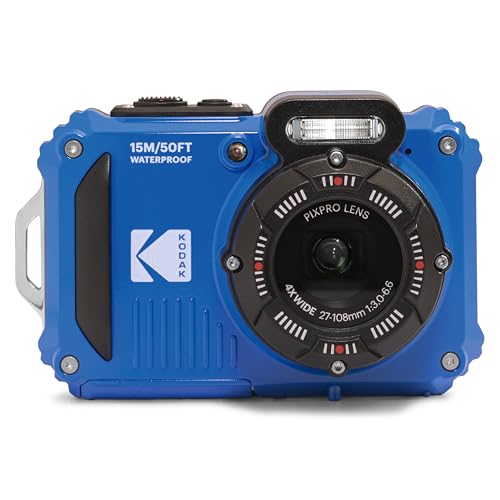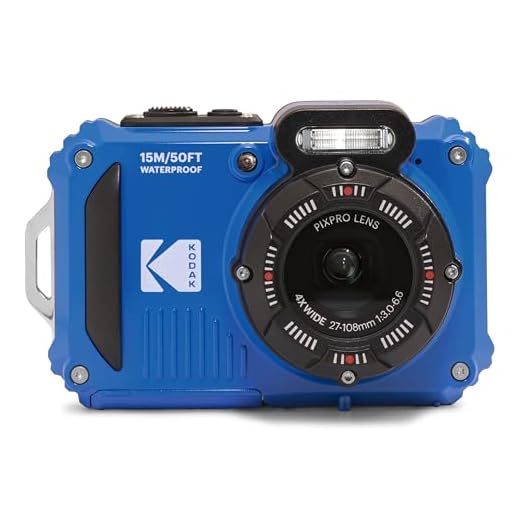




The development of digital cameras revolutionized the world of photography, but do you know which company was the pioneer in this technology?
In the late 1970s, an engineer named Steven Sasson working at Eastman Kodak Company in the United States, invented the first digital camera in 1975.
This groundbreaking invention marked the beginning of a new era in photography, paving the way for the digital imaging technologies we rely on today.
The Origin of Digital Photography
Digital photography has revolutionized the way we capture, store, and share images. The journey of digital photography began with the development of the first digital camera in the late 20th century.
One of the key milestones in the history of digital photography was the creation of the first digital camera by Kodak engineer Steven Sasson in 1975. This camera weighed 8 pounds and had a resolution of 0.01 megapixels. It recorded black-and-white images onto a cassette tape.
Over the years, advancements in technology led to the development of more compact and sophisticated digital cameras, eventually making film cameras obsolete. Today, digital photography has become an integral part of our lives, enabling us to capture and preserve memories with ease.
The Birth of Digital Cameras
Before the digital era, photography was dominated by film cameras. However, in 1975, an engineer named Steven Sasson at Eastman Kodak Company created the first digital camera. This revolutionary device weighed 8 pounds and had a resolution of 0.01 megapixels.
Key Innovations:
- Use of a charged coupled device (CCD) for image capture
- Storage of images on a cassette tape
- Conversion of analog signals into digital form
Although the first digital camera was far from perfect, it laid the foundation for the digital photography revolution that followed. Today, digital cameras are ubiquitous, offering high-resolution images, instant sharing capabilities, and a wide range of features.
The Pioneering Company
One of the pioneering companies in the development of the first digital camera was Eastman Kodak Company. Founded in 1888 by George Eastman, Kodak has a long history of innovation in the field of photography.
Eastman Kodak Company
In the 1970s, Kodak engineer Steven Sasson invented the first digital camera prototype using a charge-coupled device (CCD) image sensor. This groundbreaking invention laid the foundation for the digital imaging technology we use today.
Table: Eastman Kodak Company’s Contribution to Digital Photography
| Year | Event |
|---|---|
| 1975 | Steven Sasson invents the first digital camera prototype at Kodak. |
| 1986 | Kodak releases the first commercially available digital camera, the Kodak DCS-100. |
The First Digital Camera Prototype
The first digital camera prototype was developed by Steven Sasson, an engineer at Eastman Kodak Company, in 1975. The prototype weighed about 8 pounds and was the size of a toaster. It had a resolution of 0.01 megapixels and captured black-and-white images onto a cassette tape. The camera used a CCD sensor to convert light into an electric signal, which was then stored digitally.
Although the prototype was not very practical or user-friendly, it laid the foundation for future digital cameras. Sasson’s invention revolutionized the photography industry and paved the way for the digital imaging technology we use today.
The Revolutionary Technology
In 1975, an engineer named Steven Sasson working for Eastman Kodak Company developed the first digital camera. This breakthrough technology marked a significant milestone in the history of photography, paving the way for the digital revolution that would transform the way we capture, store, and share images.
The first digital camera created by Sasson was a bulky and primitive device by today’s standards, weighing almost 4 kg and capturing images at a resolution of 0.01 megapixels. It used a CCD image sensor to convert light into electrical signals, storing the digital images on a cassette tape.
Despite its limitations, the invention of the first digital camera laid the foundation for the development of modern digital imaging technology, revolutionizing the photography industry and opening up new possibilities for creative expression.
The Impact on Photography Industry
With the development of the first digital camera by Kodak in 1975, the photography industry underwent a significant transformation. This innovation revolutionized the way photos were taken, stored, and shared, leading to the digital photography era.
One of the major impacts of the digital camera was the democratization of photography. It made photography more accessible to the general public, as people no longer needed expensive film and equipment to take photos. This led to a rise in amateur photographers and the popularity of social media platforms for sharing photos.
Furthermore, the digital camera allowed for instant preview of photos, eliminating the need for developing film and waiting to see the results. This instant feedback loop enabled photographers to improve their skills quickly and experiment with different techniques.
Additionally, digital photography opened up new possibilities for photo editing and manipulation. With digital files, photographers could easily adjust colors, crop images, and apply filters to enhance their photos. This led to the rise of digital photo editing software and the concept of digital artistry.
In conclusion, the development of the first digital camera had a profound impact on the photography industry, shaping the way we take, share, and appreciate photos today.
The Evolution of Digital Cameras
Digital cameras have come a long way since their inception in the late 20th century. The first digital camera was developed by Kodak engineer Steven Sasson in 1975. This prototype camera was a bulky device that captured black and white images at a resolution of 0.01 megapixels.
Over the years, digital cameras have evolved significantly in terms of size, resolution, features, and functionality. The introduction of color digital cameras, higher resolution sensors, and advanced image processing technologies has revolutionized the way we capture and share images.
Today, digital cameras come in a variety of shapes and sizes, from compact point-and-shoot cameras to professional DSLRs and mirrorless cameras. They offer a wide range of features such as Wi-Fi connectivity, touchscreens, and advanced autofocus systems, making them versatile tools for photographers of all skill levels.
As technology continues to advance, we can expect digital cameras to become even more powerful and sophisticated, enabling photographers to capture stunning images with ease.
The Future of Digital Imaging
The development of digital imaging technology has revolutionized the way we capture, store, and share images. As technology continues to advance, the future of digital imaging holds exciting possibilities.
Advancements in sensor technology will result in higher resolution images with greater clarity and detail. This will allow for more immersive and lifelike visual experiences.
Artificial intelligence and machine learning algorithms will play a crucial role in enhancing image processing capabilities. These technologies will enable automatic image enhancement, object recognition, and even the creation of entirely new images based on learned patterns.
The integration of digital imaging with other emerging technologies such as augmented reality and virtual reality will open up new creative possibilities. Imagine being able to interact with and manipulate digital images in real-time, creating dynamic and interactive visual experiences.
The future of digital imaging is bright, with endless opportunities for innovation and creativity. As technology continues to evolve, we can expect even more exciting developments in the world of digital photography and imaging.
FAQ
Who developed the first digital camera?
The first digital camera was developed by Kodak engineer Steven Sasson in 1975.
When was the first digital camera developed?
The first digital camera was developed in 1975 by Kodak engineer Steven Sasson.
What company was responsible for creating the first digital camera?
Kodak was the company that developed the first digital camera, with engineer Steven Sasson leading the project in 1975.
Can you tell me about the origins of the first digital camera and the company behind it?
The first digital camera was created by Kodak engineer Steven Sasson in 1975. This groundbreaking invention marked the beginning of the digital photography revolution.






